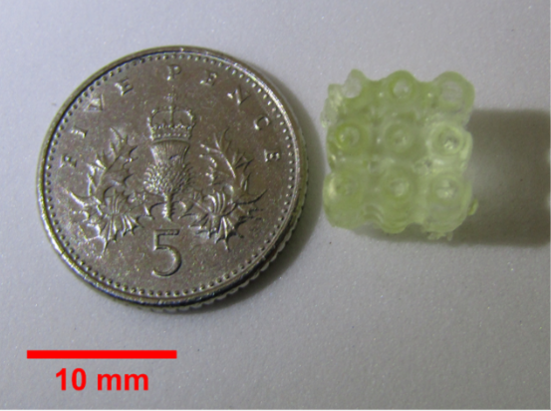UK researchers devise method for 3D printing at molecular scale to fabricate electronic components with quantum technology potential
The photochromic composite was printed into a variety of shapes
Until now, 3D printing or additive manufacturing, has only been able to manipulate matter in powder form. New research from Nottingham University has shown that it can also work on the molecular scale, opening up possibilities for making electronic components that could have applications in quantum computing.
A team led by Victor Sans Sangorrin of the Faculty of Engineering and Graham Newton of the School of Chemistry used photochromic molecules, which change colour when exposed to light, combined with a custom-made polymer.
Sans and Newton used a nano structured tungsten-containing polyoxometalate that changed colour from colourless to blue when illuminated, and returned to colourless when exposed to oxygen in the air. This was printed as a composite with a polyoxymethylene polymer, a class of materials used as engineering thermoplastics because of their stiffness and low friction.
In a paper in the journal Advanced Materials, Sans and Newton explain that this new material can store information reversibly.
“In theory, it would be possible to reversibly encode something quite complex like a QR code or a barcode, and then wipe the material clean, almost like cleaning a whiteboard with an eraser,” Newton said.
He added that, although this initial research used photochromic materials, any material that reversibly changes properties in response to an external stimulus could be used. “This approach could be used to develop materials for energy storage and electronics,” he said.
“This bottom-up approach to device fabrication will push the boundaries of additive manufacturing like never before,” Sans added.

